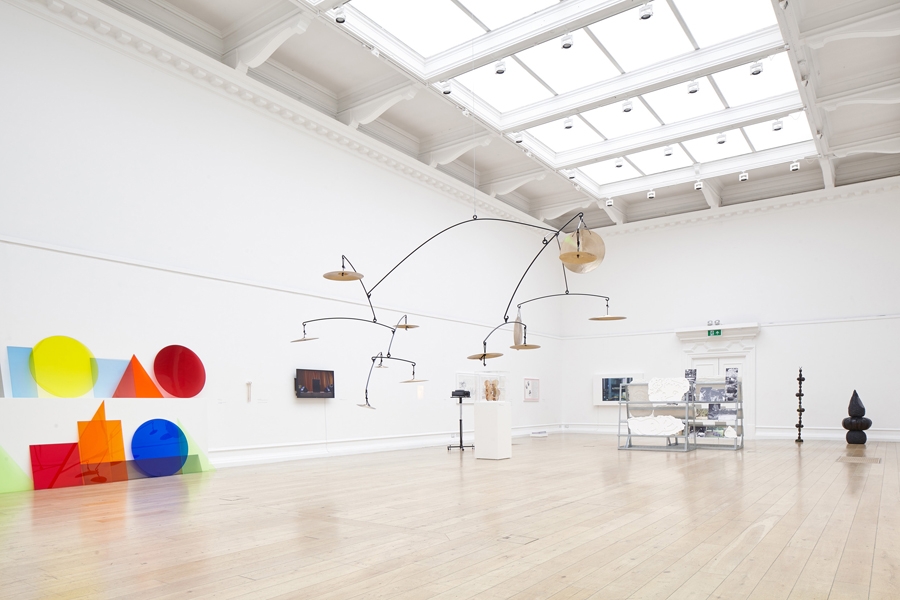South London Gallery, 10 June – 4 September 2016
Curated by Pablo Léon de la Barra, this exhibition focuses on the second part of the Guggenheim UBS MAP Global Art Initiative (a three-phase collecting-cum-curating project started in 2012, inviting curators from South and Southeast Asia, Latin America and the Middle East and North Africa for a two-year residency resulting in the acquisition of a range of works from each region by the Guggenheim). It features works by 40 artists from 14 countries, and ‘focuses’ on works created between the 1960s and 2014 (a rather loose understanding of the title’s ‘Today’).
Pan-continental art surveys are risky curatorial ventures; in putting them together, curators often find themselves working the ground between an overly harmonised plurality of voices and contexts, and a ‘multiculturalist’ trap that limits the curatorial discourse to cultural diversity, often resulting in juxtapositions of works that seem too disparate to interrelate. In the main, the works on show here seem to have been selected for their ability to fit an expected discourse on Latin America thematised around politics, conceptualism, Modernism and the tropical.
Most of the works in the main space of the gallery are both ideological and formal reflections on Western-dominated (art) historical narratives, yet their arrangement tends to promote the formal associations alone, defusing any subversive potential. The fruits spiked on the hooks of a 1953 Charles and Ray Eames Hang it all coat rack (Colombian Gabriel Sierra’s Hang It All, 2006) face São Paulo-based Erika Verzutti’s totemic bronze sculptures, made of moulded tropical fruits and flowers heaped on top of each other. Cuban Wilfredo Prieto’s wheelbarrow of soil, from which protrudes a single plant the artist took for a five-kilometre walk around a Caribbean island (Walk, 2000, winking at practices of artists such as Francis Alÿs and Robert Smithson), features next to Columbian artist Wilson Díaz’s green neon sign Movement of the Liberation of the Coca Plant (2012–14).
Also on view are some more explicitly political works. Political oppression and state censorship are at the core of Tania Bruguera’s Tatlin’s Whisper #6 (Havana version), recording a 2009 performance for the Havana Biennial in which she invited people to take the stage and speak uncensored for one minute (her ensuing attempt to restage the piece on Havana’s Revolution Square was interrupted by the Cuban authorities). Carlos Motta’s listlike posters titled Brief History of US Interventions in Latin America Since 1946 (2005–09) are presented alongside a video of Chile-born, US-based Alfredo Jaar’s LED animation This is Not America: A Logo for America, which in 1987 appeared in lights on the display screens overlooking the Times Square US Army recruiting station. Riffing on David Bowie’s 1985 song of the same title and Magritte’s ‘This is not a pipe’ painting (The Treachery of Images, 1928–29), Jaar’s sign shows an outline map of the US emblazoned with the statement: ‘This is Not America’. North–South politics is also the subject of Venezuelan Javier Téllez’s brilliant video One Flew Over the Void (Bala Perdida) (2005), presented across the road from the main gallery on the ground floor of a disused fire station). Casting people with mental illnesses and learning difficulties who wear animal masks and hold signs with slogans protesting their own social marginalisation, the video captures a disturbing, carnivallike protest staged by the artist in the border city of Tijuana that climaxes with a stuntman being cannonballed across the Mexico–US fence. Blurring the line between participatory event and documented performance, the work’s force resides in its ambiguity and the ethical tension at play here (is this exploitation?), provoking in the viewer a necessary – but fruitful – unease.
Although the MAP initiative may feel like the Guggenheim is climbing on a bandwagon, there is something laudable about opening the art-historical narratives constructed by art museums like the Guggenheim to art being produced beyond northern art centres (better late than never). However, the effort can find itself truncated if the works are merely used to reinforce well-trod narratives, rather than complexifying and enriching them with new perspectives. Believe it or not, not all Latin American art is about identity politics. Although these conversations are still relevant ones, they are not new, and what’s missing here are the ones that are happening ‘today’.
This article was first published in the September 2016 issue of ArtReview.
